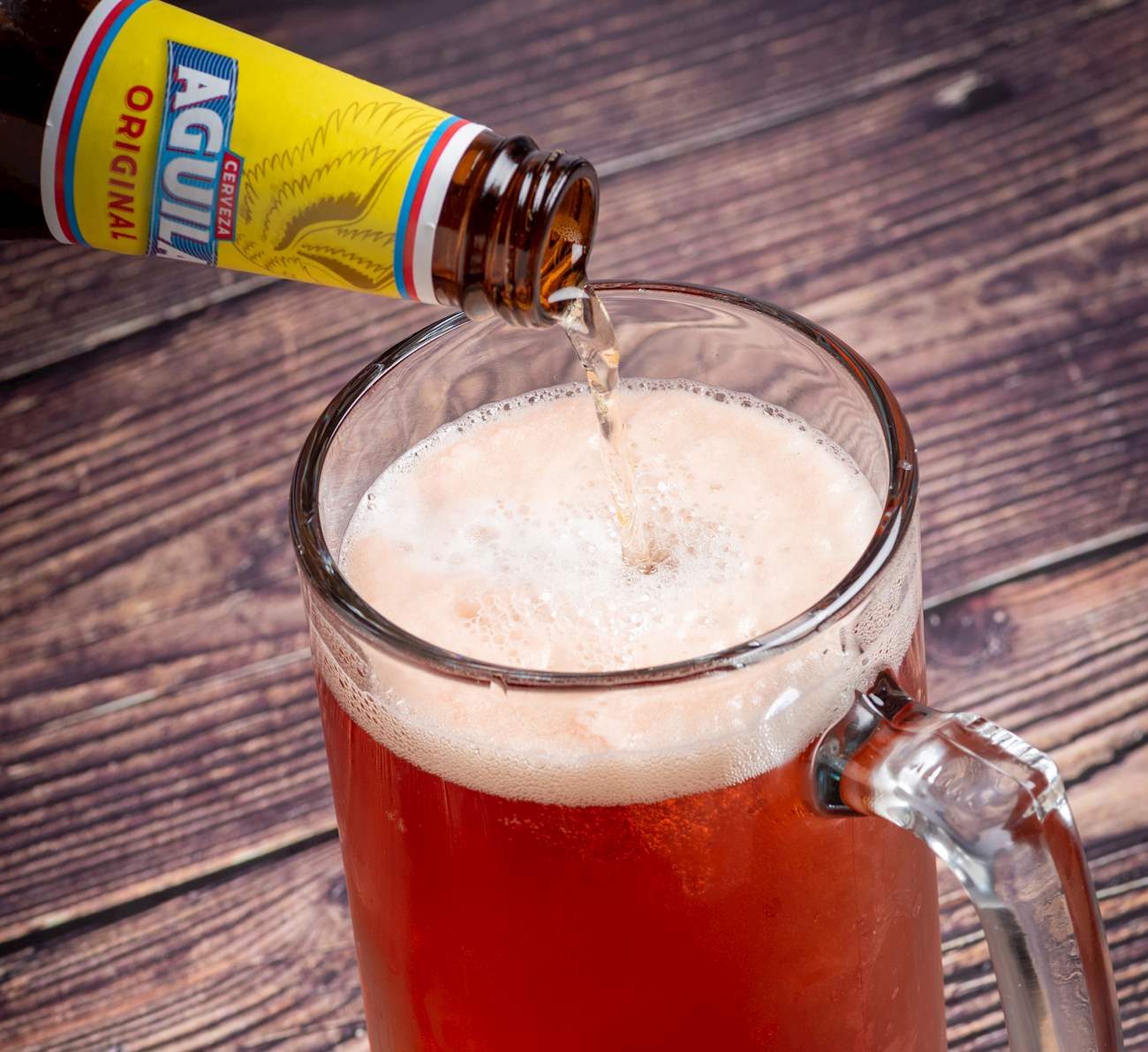TABLE OF CONTENTS
Best Alcoholic Mixed Drink Types in the World
MAIN INGREDIENTS
Coquito is a traditional cocktail similar to eggnog. It is typically prepared and consumed during the festive Christmas season. The cocktail is made with a combination of coconut milk, rum, condensed milk, and vanilla, although every family has their own variation.
In order to prepare it, all ingredients should be blended, then chilled and served in small glasses. It is recommended to garnish coquito with nutmeg on top. The name of this drink means little coconut. In Cuba, they serve it with scoops of coconut ice cream, while the Spanish people serve it with turron.
MAIN INGREDIENTS
Bittersweet and refreshing, Refajo is a Colombian cocktail made with a combination of Colombiana soda, pale lager, and sometimes aguardiente as well. All ingredients are typically mixed together in a chilled pitcher without stirring. The cocktail is served over ice and it is often garnished with lime and orange wedges.
Refajo is traditionally served as an accompaniment at asado barbecues throughout Colombia, where everyone has a glass of this refreshing drink in their hands while preparing copious amounts of steak, grilled corn, and potatoes.
MAIN INGREDIENTS
Sugary, refreshing, and herbaceous, Mojito is a traditional cocktail based on rum as the key ingredient. It has a relatively low alcohol content (about 10%). Although Havana is considered its birthplace, the origin of this simple cocktail is still disputed.
The original Cuban cocktail recipe includes white rum, sugar, lime juice, soda water, and spearmint yerba buena that grows on the island, but almost every mint variety can be used in the mix if yerba buena is not available. The components of the cocktail are added in a particular order: sugar and lime juice are gently mashed before mint and rum are added to the combination; the cocktail is then briefly stirred and topped with ice and sparkling soda water.
VARIATIONS OF Mojito
It is not Christmas in Chile without a glass of Cola de Mono (lit. Monkey’s Tail). There are numerous versions of this beverage, but it typically consists of milk, sugar, coffee, cloves, cinnamon, and aguardiente – distilled spirits containing between 29% and 60% alcohol by volume.
Brandy or rum are among the most common types of alcohol used in Cola de Mono. All ingredients are first boiled, cooled, then combined with aguardiente. The drink can be served hot or cold, and it is traditionally paired with a slice of pan de pascua, a traditional Christmas bread.
MAIN INGREDIENTS
Chilcano is a Peruvian cocktail made with a combination of pisco, lime juice, and ginger ale. The simple cocktail is prepared by combining the ingredients in a highball glass over ice, then stirring the combination. If desired, the cocktail can be additionally enriched by adding a few drops of bitters and it is recommended to garnish it with a lime twist.
Regarding the origins of this refreshing cocktail, it is believed that the drink started to be called chilcano, which is the name of a local fish head soup, because both the drink and the soup were great hangover cures.
MAIN INGREDIENTS
Sangría blanca or white sangría is a white wine version of this popular Spanish wine cocktail. It is usually sweetened and made with light, fruity, and fragrant white wines, while the selection of fruit typically includes peaches, apples, pears, melons, plums, berries, oranges, lemons, and limes.
The drink is made by combining white wine, sugar, citrus juice, and fruit. The amount of sugar will depend on the sweetness of the wine and is usually adjusted to taste. It is recommended to cut the fruit into equal-sized pieces, and the combination is best left to macerate for several hours or overnight.
A Brazilian national cocktail called Caipirinha is made with cachaça, sugar, and lime. Cachaça is the most common distilled alcoholic drink in Brazil, and it can be consumed by itself or used as a base for a number of mixed beverages.
This refreshing cocktail is simple to prepare: sugar and lime that has been cut into quarters should be gently muddled together with a wooden spoon before adding cachaça and ice. The traditional way to make Caipirinha is in a single large jar that can be shared amongst people, but it can also be served in an old-fashioned glass with a lime wedge garnish.
MAIN INGREDIENTS
Pisco Sour is a Peruvian cocktail made with a combination of Pisco brandy, lime juice, sugar syrup, and egg whites. The ingredients are shaken with ice and then strained into an old-fashioned glass. The cocktail is traditionally garnished with Amargo Chancho bitters, but Angostura bitters are widely used today.
The first Pisco Sour was made in the early 1920s in Lima by an American bartender Victor Vaughn Morris. Today, there is still an ongoing debate about Pisco Sour’s origin, with Peru and Chile both claiming that their nation is the home of the first Pisco.
MAIN INGREDIENTS
Melón con Vino is a Chilean drink consisting of a hollowed-out honeydew melon that is filled with chilled white wine and powdered sugar. This sticky and sweet concoction is especially popular during summer, and it is typically shared among friends at barbecues, celebrations, and picnics.
Melón con Vino is such a staple of Chilean culture and gastronomy that it even has its own day – January 15th, when the drink is celebrated annually, and people are encouraged to spend time with their loved ones while drinking this light and refreshing alcoholic beverage.
MAIN INGREDIENTS
Vampiro is a Mexican cocktail that's usuall made with a combination of tequila, tomato juice, orange juice, lime juice, salt, pepper, hot chili peppers or hot pepper sauce, and grenadine syrup. In order to prepare it, all ingredients should be shaken with ice, then strained into an ice-filled glass with a salted rim.
However, as there are numerous variations on the cocktail, it is often made without grenadine, or with pomegranate juice replacing the tomato juice. The name Vampiro (lit. vampire) is a reference to the cocktail’s color, which is reminiscent of blood.
TasteAtlas food rankings are based on the ratings of the TasteAtlas audience, with a series of mechanisms that recognize real users and that ignore bot, nationalist or local patriotic ratings, and give additional value to the ratings of users that the system recognizes as knowledgeable. For the “Top 100 Alcoholic Mixed Drinks in the World” list until March 21, 2025, 10,098 ratings were recorded, of which 8,047 were recognized by the system as legitimate. TasteAtlas Rankings should not be seen as the final global conclusion about food. Their purpose is to promote excellent local foods, instill pride in traditional dishes, and arouse curiosity about dishes you haven’t tried.































































































































